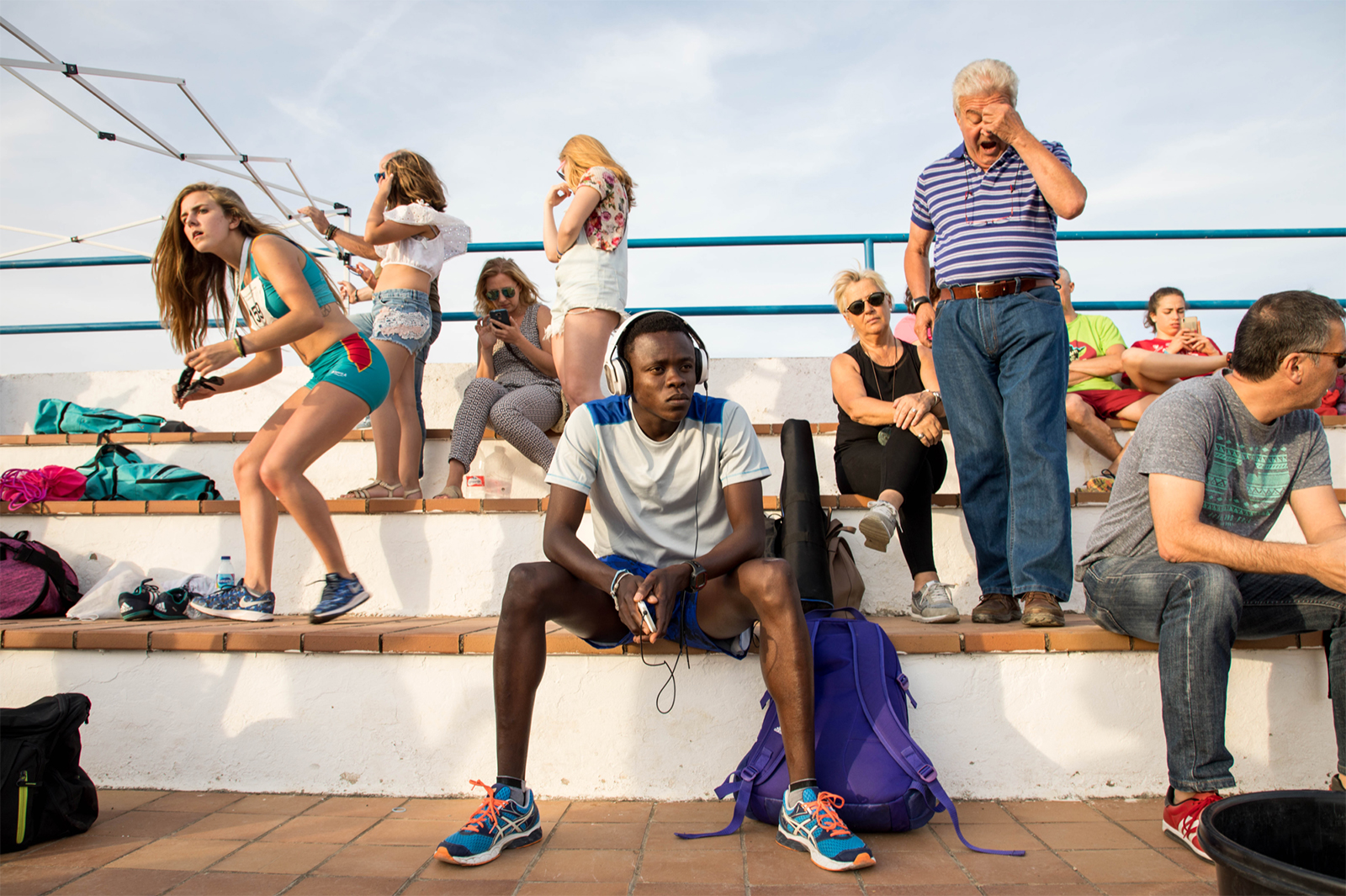Director of ¡BOZA! immerses herself documenting experience of migration to Spain

Sydney Bowie’s documentary “¡BOZA!” highlights the stories of three sub-Saharan African immigrants and their separate journeys to begin new lives in Spain. The stories’ shared optimism in the face of adversity create a unified narrative, Bowie said. (Courtesy of Sydney Bowie)
By Olivia Mazzucato
May 13, 2019 11:19 p.m.
Sydney Bowie was filming her documentary “¡BOZA!” in an apartment in Morocco when someone asked if she wanted to see a boat.
The alumna and director of the film said she thought there had been an error in translation, unsure of how a boat meant to carry immigrants across the Mediterranean to Spain could fit into the small apartment. But then some prospective migrants brought out a small rubber raft and two hand-carved wooden oars, shocking Bowie as she imagined crossing the dangerous route on little more than a child’s toy.
Through “¡BOZA!,” which premiered April 29 at the Newport Beach Film Festival, Bowie followed three sub-Saharan African immigrants as they began new lives in Spain. She worked to tell a character-driven story by focusing on elements of her subjects’ immigration that were less widely documented in media – the struggle of the entire journey and the pursuit of the immigrants’ dreams once they arrive.
“There’s so much focus on the very tail end of this migratory journey … literally and figuratively (washing) up on European soil, but what people don’t really know or talk about is everything that comes before that,” Bowie said. “Migrants often spend years on that part of the journey and most of them describe it to me as the most difficult parts of their journey.”
Bowie said her own journey began when she first applied for a Fulbright grant in 2015 and used the money to live in Spain for several months in 2016 to conduct preliminary research. While there, she worked in an immigrant reception center and became involved in the immigrant community as she tried to find the right subjects for her documentary.
Ultimately, she said she decided to highlight three immigrants with distinct stories – Sani Ladan, an academic who left his home to get an education; Kone Yossodjo, an aspiring Olympic runner; and Yamal Awudu, who was orphaned as a child and sought a sense of community and home in Spain. Bowie felt their three stories complemented each other, as each is a different iteration of immigrants’ dreams while maintaining a shared optimism in the face of adversity.
“I felt like the media had a tendency to portray migrants, especially sub-Saharan African migrants, as victims of circumstance,” Bowie said. “I really wanted to have three inspiring protagonists that really had been able to follow their dreams after immigrating.”
As Bowie listened to their stories, she said she wondered how she could depict their immigration journeys. Awudu described his story of migration in vivid detail, as if he was the star of his own movie, Bowie said. He also loved cartoons, and the combination gave her the idea to work with Argentine animator Guadalupe Vyleta to animate the migration sequences using a watercolor style.
“That also served a practical purpose, which was, ‘We don’t have any footage of these events – what did the viewer see?’” Bowie said. “Animation was such a playful medium to work with because we kind of added a little touch of magical realism.”
Awudu’s love for film also inspired composer Freddy Avis when he was scoring the animated sequences. While Avis tried to keep the score more subtle throughout the rest of the film, the animated sequences offered an opportunity for the score to become a storytelling vehicle, and he used more pronounced percussion to underscore the danger illustrated in the vignettes of the subjects’ migrations.
“(Awudu) talked about his journey as a migrant being this sort of adventure for him,” Avis said. “So to score his flashbacks was really fun because giving it sort of a Hollywood flair was actually really appropriate for his memory of his experience as this adventure, which had really rough patches.”
Though the film featured elements of fantasy and historic recreations, the story was grounded in the relationships Bowie developed with each of her subjects. Director of photography Brecht Van’t Hof said he was struck by Bowie’s ability to help her subjects let their guard down and capture smaller moments and reactions that illustrated their character.
“(I learned to) be recording at all times because you never know what someone might say or what might happen,” Van’t Hof said. “The editor that (Bowie) brought on really brought on the quieter moments and shed light on how important some of those moments were, whether it’s something that they said in an interview or even just the way that they’d walk around in different cities looking around.”
Bowie said she sought to keep the theme of hope central to the narrative of the documentary, which informed how she titled it. She picked the word “boza,” a chant adopted by immigrants crossing the Spanish border. The word has Fulani origins, and translates roughly to “victory,” but has come to take on its own meaning for immigrants, Bowie said.
“It’s a celebratory chant that means freedom, end of suffering – I think each person would give their own unique definition of the meaning of the word,” Bowie said. “I just thought it perfectly captured the tone of the film and the kind of message that the film’s trying to convey.”


